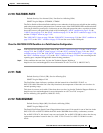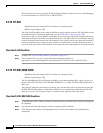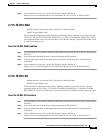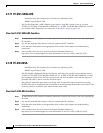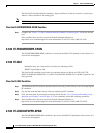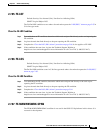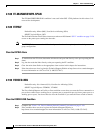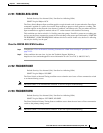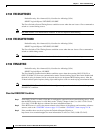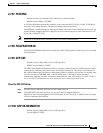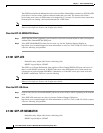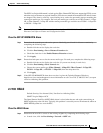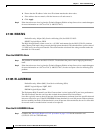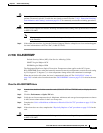
2-65
Cisco ONS 15310-CL and Cisco ONS 15310-MA Troubleshooting Guide, R7.0
Chapter 2 Alarm Troubleshooting
2.7.91 FORCED-REQ-SPAN
2.7.91 FORCED-REQ-SPAN
Default Severity: Not Alarmed (NA), Non-Service-Affecting (NSA)
SONET Logical Object: OCN
The Force Switch Request Span condition applies to optical trunk cards in spans when the Force Span
command is applied to a span to force traffic from working to protect or from protect to working. This
condition appears on the network view Alarms, Conditions, and History tabs. The port where the Force
Span command was applied is marked with an “F” on the network view detailed circuit map.
This condition can also be raised in 1+1 facility protection groups. If traffic is present on a working port
and you use the Force command to prevent it from switching to the protect port (indicated by “FORCED
TO WORKING”), FORCED-REQ-SPAN indicates this force switch. In this case, the force is affecting
not only the facility, but the span.
Clear the FORCED-REQ-SPAN Condition
Step 1 Complete the “Clear an External Switching Command on a Path Protection Span” procedure on
page 2-152.
Step 2 If the condition does not clear, log into the Technical Support Website at
http://www.cisco.com/techsupport for more information or call Cisco TAC (1-800-553-2447).
2.7.92 FRCDSWTOINT
Default Severity: Not Alarmed (NA), Non-Service-Affecting (NSA)
SONET Logical Object: NE-SREF
The Force Switch to Internal Timing condition occurs when the user issues a Force command to switch
to an internal timing source.
Note FRCDSWTOINT is an informational condition. It does not require troubleshooting.
2.7.93 FRCDSWTOPRI
Default Severity: Not Alarmed (NA), Non-Service-Affecting (NSA)
SONET Logical Objects: EXT-SREF, NE-SREF
The Force Switch to Primary Timing Source condition occurs when the user issues a Force command to
switch to the primary timing source.
Note FRCDSWTOPRI is an informational condition. It does not require troubleshooting.



